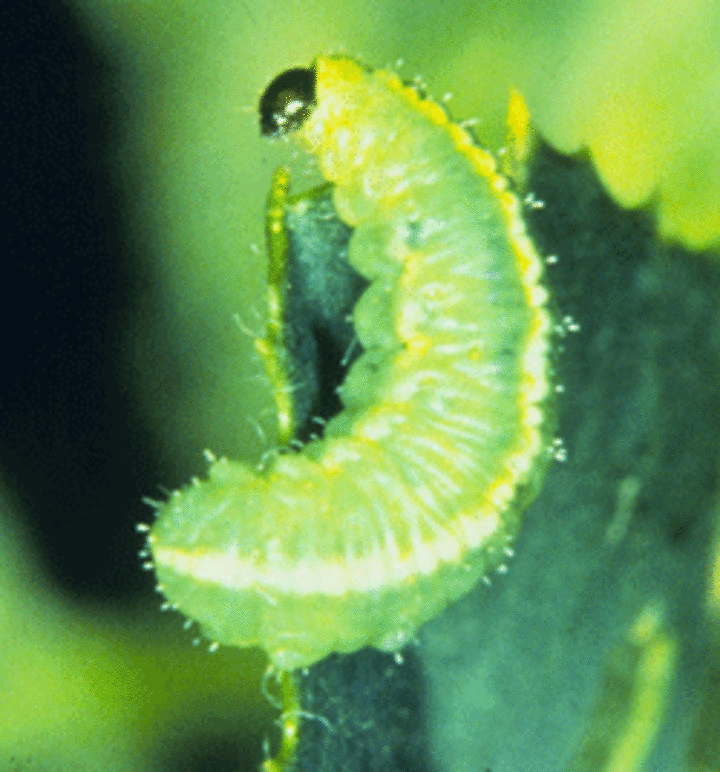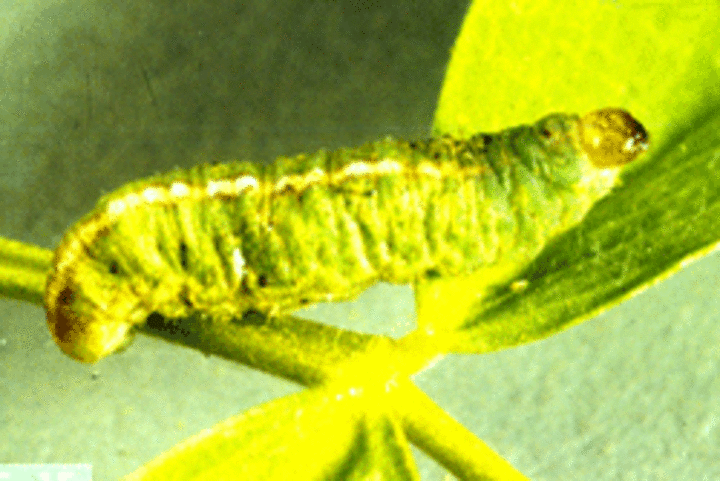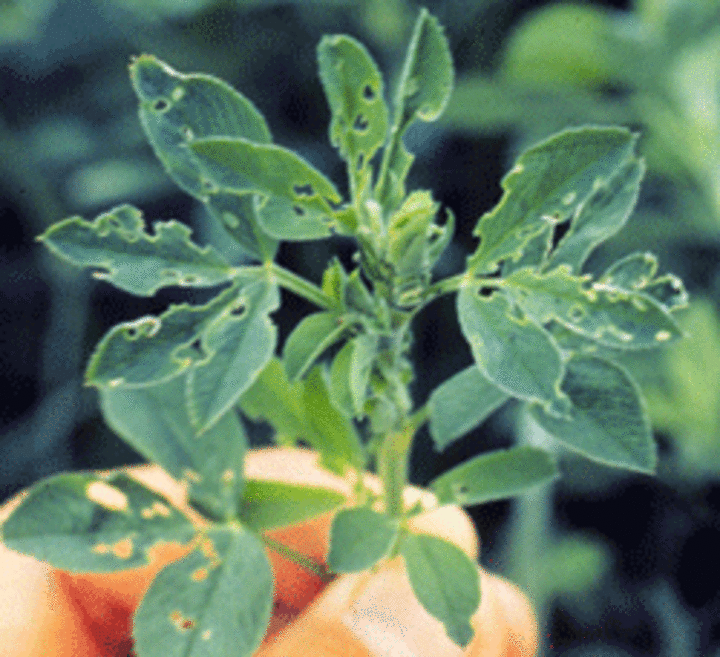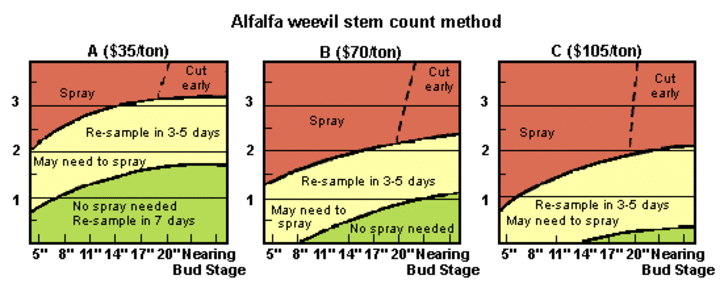April 20, 2007



Based on growing degree days, alfalfa weevil larvae should be hatching from eggs statewide, and small pinholes may be visible in the new alfalfa growth near the tips of the plants as soon as next week. While alfalfa weevil damage has been spotty in much of Nebraska over the past few years, the potential for damage always exists. Despite the temptation to concentrate on row crop activities now, if you're growing high quality alfalfa hay be sure to take time over the next few weeks to monitor fields for weevils.
Most alfalfa weevils overwinter as adults and become active and lay eggs; however, some eggs overwinter as well and hatch earlier. This has resulted in some areas in Nebraska (Panhandle and the northern tier of counties) being hit with two flushes of weevils in the spring. In the last few years some areas of the state have received damage to regrowth after the first cutting due to a combination of late larval feeding and adult feeding. Be alert to this potential after the first cutting.
Clover leaf weevils are occasionally a problem but are very vulnerable to fungus disease and so haven't been pests since the late 80s and early 90s when spring rains were rare. Dry conditions over the past several years in western Nebraska may have aided them in building their populations, although recent rain could have knocked populations down. Clover leaf weevil larvae will be in the debris around the crowns during day. Scratching in the soil around the crowns and counting the number of larvae found per crown will help give a better idea of clover leaf weevil infestation. Their brown heads will help distinguish them from the black-headed alfalfa weevil. Table 1 will compare the alfalfa weevil and the clover leaf weevil.
| Table 1. Comparison of alfalfa weevil to clover leaf weevil. | |
| Alfalfa Weevils | Clover Leaf Weevils |
| Overwinter primarily as adults | Overwinter primarily as larvae |
| Adults brown with dark brown stripe halfway down back, 3/16 inch long | Adults dark brown, pitted light brown underneath, over 1/4 inch long |
| Larvae prefer to feed on tips | Larvae feed anywhere on plant |
| Larvae remain on plant most of the time | Most larvae in soil or debris during daytime hours |
| Larvae have black heads | Larvae have brown heads |
| Adults leave fields in June | Adults may remain in fields |
Both the alfalfa and clover leaf weevils feed on first cutting alfalfa as larvae, and regrowth after the first cutting as adults (and sometimes larvae). While research in northeast Nebraska has shown that feeding by clover leaf weevil larva does not cause yield reduction to first cutting alfalfa, alfalfa weevil feeding can cause severe losses to yield and quality of the first cutting.
It is essential that fields be monitored for alfalfa weevil feeding now. Damage consists of small holes and interveinal feeding on the newest leaflets near the stem tips. The larvae are small (1/16 to 3/8 inch in length) and pale yellowish green, becoming a darker green when larger. These legless worms have black heads and a white stripe the length of the back. The alfalfa weevil larvae spend nearly all their time on the plant. They curl into a C-shape when disturbed.

Once the alfalfa is about 4-6 inches or so in height, take a bucket, carefully cut some stems at ground level (30 to 50 per field, from various spots in the field) and shake the stems against the side of the bucket. Average the number of weevil larvae per stem. Use the charts to help determine whether to control alfalfa weevils. Each chart has been developed for a different alfalfa value.
To treat or re-sample depends on the average number of weevils per stem, the stem length and the value of the alfalfa. When alfalfa reaches a certain height, it may be more profitable to cut the alfalfa early rather than to treat.
Treatment
Insecticides registered to control alfalfa weevil larvae include Ambush, Baythroid, Cythion, Furadan, Guthion, Imidan, Lannate, Lorsban, Mustang Max, Penncap M, Proaxis, Pounce, Sevin, and Warrior. Check the labels or visit the Entomology Web site at http://entomology.unl.edu/instabls/instabls.htm to find the use rates.
Keith Jarvi
Extension Entomologist
Northeast REC, Norfolk
